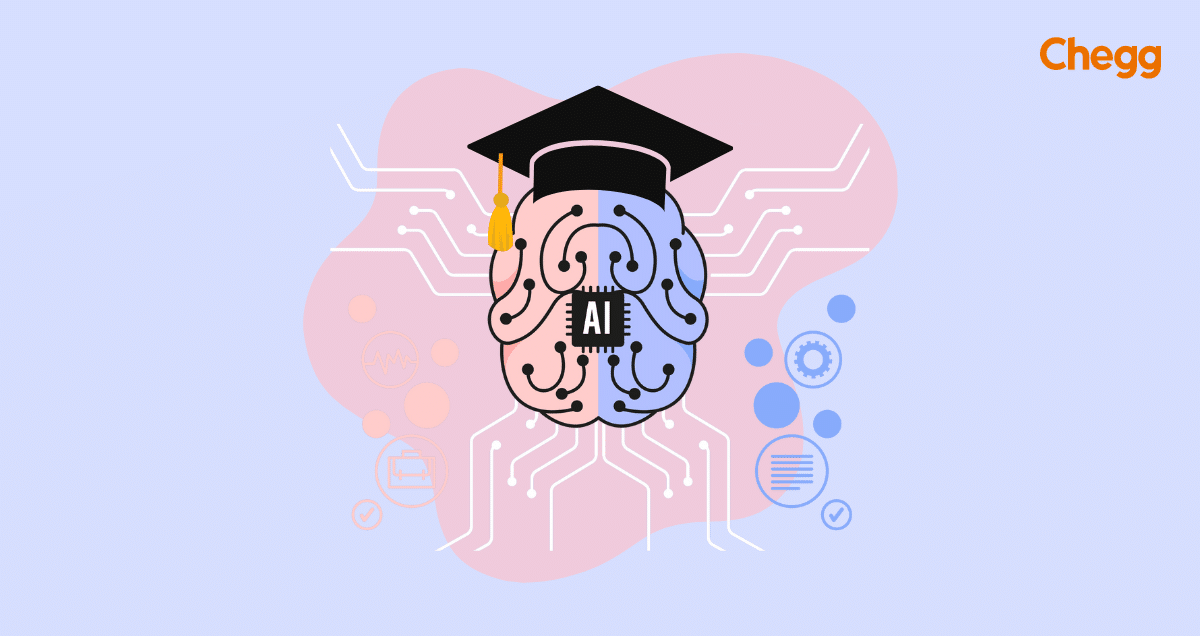

Quick Summary
Artificial intelligence (AI) involves techniques for mimicking human behaviour, and several AI courses after 12th are available to the students. A branch of AI, machine learning (ML), enables computers to learn from historical data without explicit programming, a concept that never fails to inspire. The increasing demand for artificial intelligence courses highlights the relevance of these programs in the booming AI industry. This practical application of science and mathematics principles makes a B.Tech in Artificial Intelligence and Machine Learning course an exciting option for those interested in the field. B.Sc. and BCA are also some courses that have AI-based programs.
After 12th, students can pursue various Artificial Intelligence (AI) courses, including Bachelor of Technology (B.Tech) in AI, Bachelor of Science (B.Sc) in AI, Bachelor of Computer Application (BCA) with AI specialization, and Diploma programs in AI and Machine Learning. These courses offer a foundation in AI principles, machine learning, data analysis, and related areas.
The global market for artificial intelligence and machine learning diploma courses is anticipated to expand at a compound annual growth rate (CAGR) of 23% between 2023 and 2028. Through this course, students learn theoretical and practical skills, which they can use to develop various career opportunities.
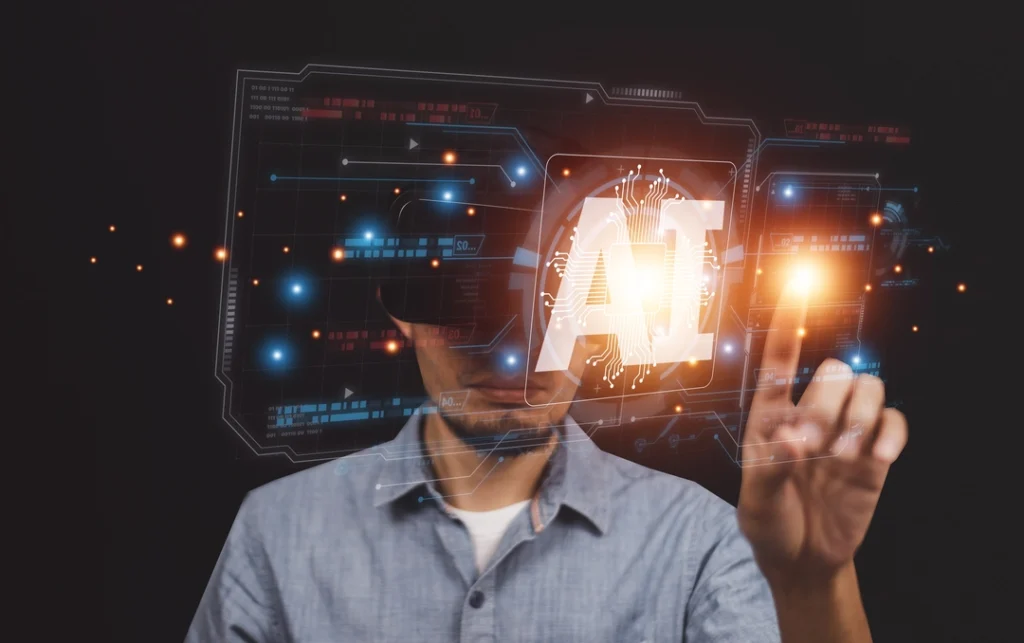
Artificial Intelligence (AI) is a rapidly growing field that has revolutionized our lives and work. It involves creating intelligent machines that can perform tasks typically requiring human intelligence, such as problem-solving, decision-making, and learning.
AI has number of applications across various industries, including healthcare, finance, transportation, and education. By leveraging AI, these sectors can enhance efficiency, improve decision-making processes, and offer innovative solutions to complex problems.

Artificial Intelligence program is an innovative undergraduate course that aims to give students an integrated vision of AI and Machine learning. With a focus on probability and applied statistics, you are introduced to real-world applications of artificial intelligence and machine learning (AIML) at the start of the course duration first semester. This enables you to optimize models and solutions by allowing you to think about AIML applications from a theoretical and practical perspective.
AI Courses After 12th: Choosing the best AI Course
Let us discuss AI Courses available to students after the 12th standard in detail. Here is a list of the Specializations that BTech, B.Sc, and BCA degrees in Artificial Intelligence Offer
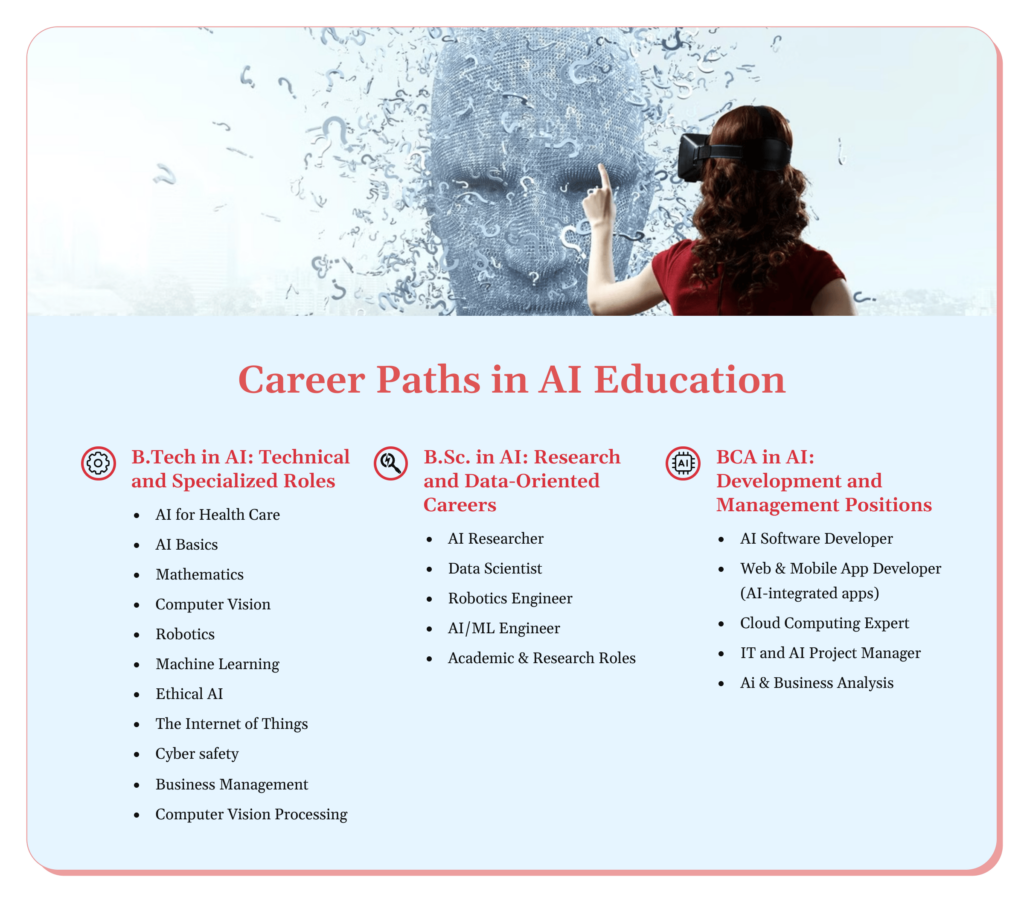
Artificial intelligence can potentially improve decision-making in a wide range of other industries. AI in health care will provide predictive analytics, treatment plans customized to the patient, and diagnosis. AI will transform the manufacturing segment through process automation and building quality. While AI in the education industry is gathering rapid momentum, it lays a foundation for an industry that induces innovation, reduces costs, and increases productivity in a new age.
The syllabus for a B.Tech in artificial science stream of intelligence is designed to impart an all-round education in Artificial Intelligence. Diploma and certification courses are also available as alternative educational pathways in AI.
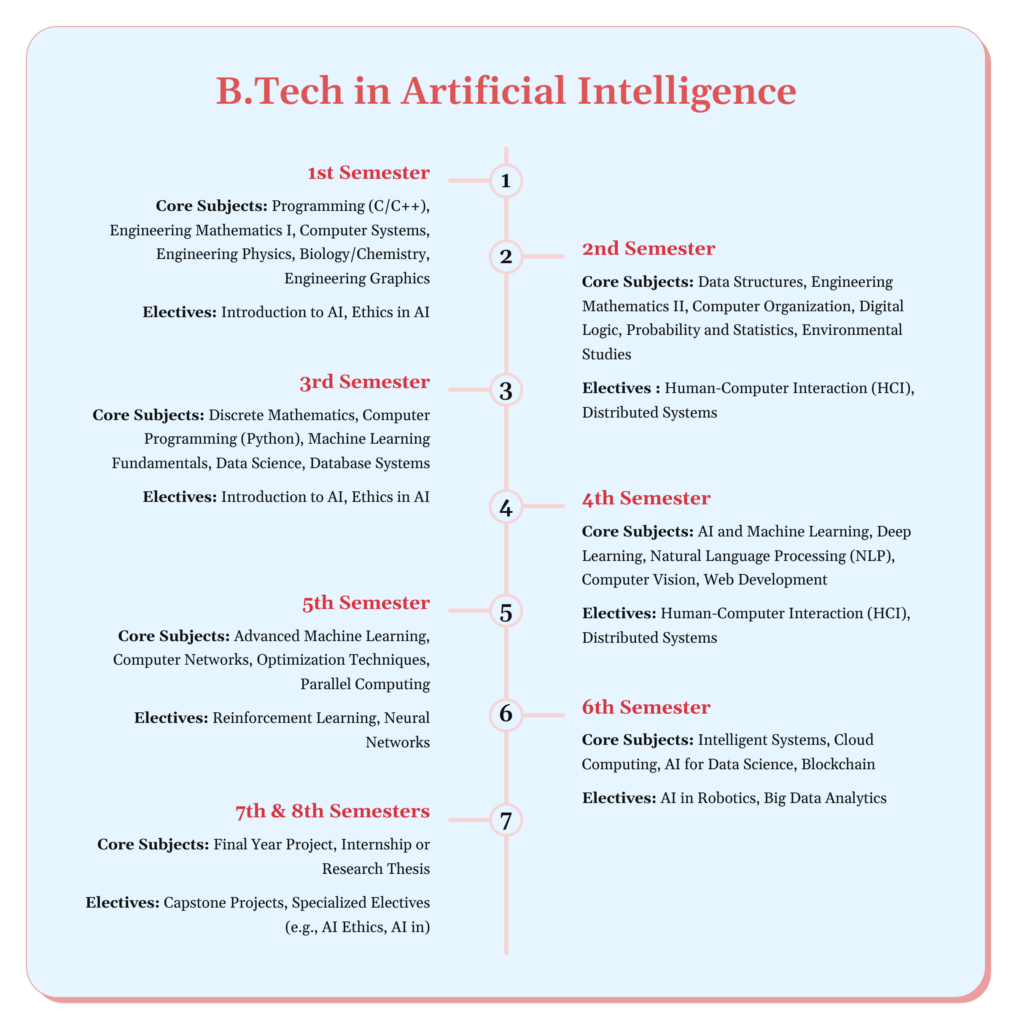
A B.Sc in AI is a science-backed program founded on the principles of mathematics, statistics, and AI algorithms. It focuses on the theoretical aspects of AI, with its students working towards research, development, and advanced computing.
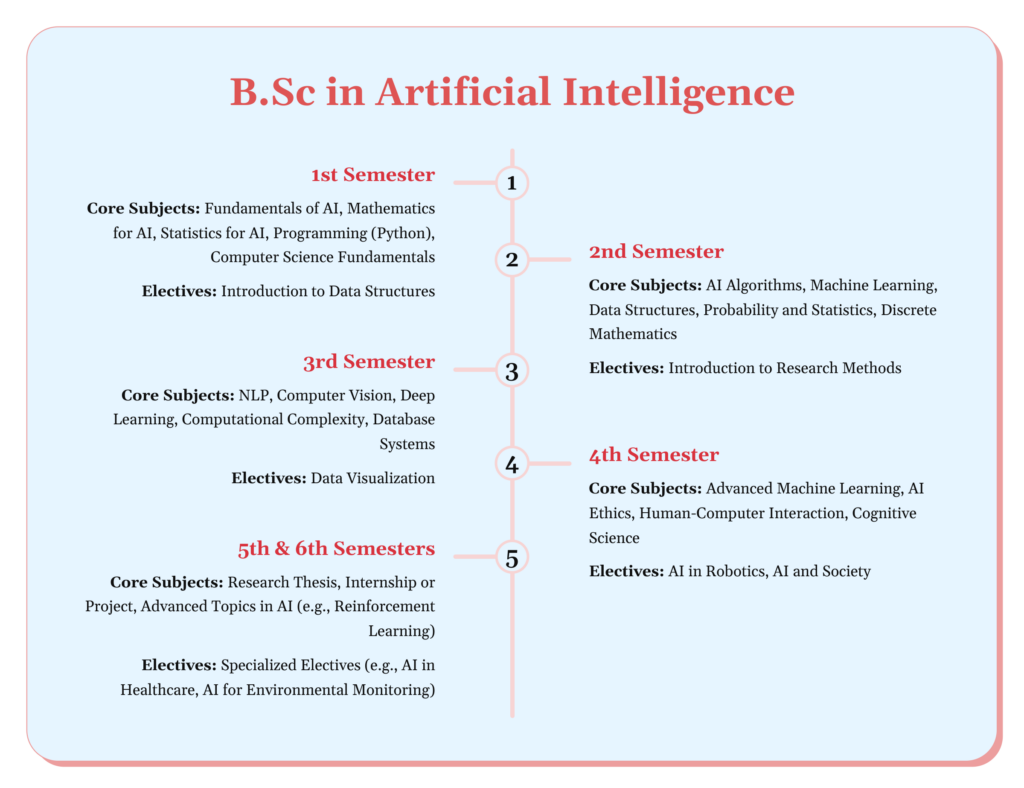
BCA in Artificial Intelligence(AI) focuses on software development, programming, and AI applications, aiming to achieve maximum AI implementations, AI software development, and solutions.
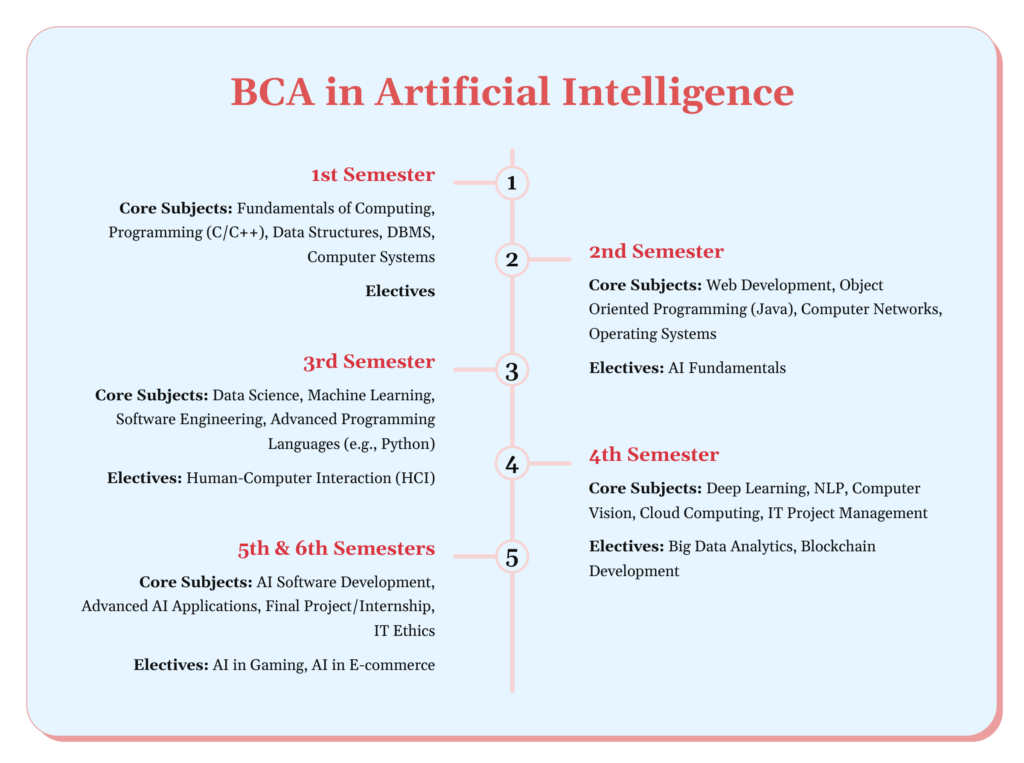
Generally, you must complete higher secondary science or electrical engineering courses, mainly Math, Physics, and Chemistry, to be eligible for B.Tech, BCA, & B.Sc in Artificial Intelligence (AI) courses after 12th grade. This degree offers detailed insights into AI technologies and promising career prospects in a rapidly growing field.

Leading Institutions Offering B.Tech, BCA, & B.Sc in Artificial Intelligence
Several top-notch institutions offer B.Tech, BCA, & B.Sc courses in Artificial Intelligence in Artificial Intelligence. When considering tech artificial intelligence colleges, it is essential to look at the criteria for admission, such as cut-off scores and entrance exam performance, as well as the top private institutions offering these courses. Here’s an overview of some of the Artificial Intelligence colleges in India:

The course covers a wide range of AI topics such as machine learning, robotics, computer vision, and natural language processing, giving students both theoretical knowledge and practical experience.
Along with the B.Tech program, IIT Bombay also offers M.Tech and PhD programs in Artificial Intelligence, all taught by experienced faculty members who are actively involved in research and development.
1. IIT Bombay (Indian Institute of Technology Bombay)
IIT Bombay is well-known for its excellence in engineering and technology education. Its Department of Computer Science and Engineering offers a B.Tech program in Artificial Intelligence, designed to give students a strong foundation in this rapidly growing field. The institute also provides modern labs, advanced research facilities, and a supportive environment that encourages hands-on learning and innovation.
The course covers a wide range of AI topics such as machine learning, robotics, computer vision, and natural language processing, giving students both theoretical knowledge and practical experience.
Along with the B.Tech program, IIT Bombay also offers M.Tech and PhD programs in Artificial Intelligence, all taught by experienced faculty members who are actively involved in research and development.
2. Indian Institute of Technology (IIT) Delhi
IIT Delhi offers a thorough B.Tech in artificial intelligence and data science program. The institute works with industry partners to facilitate internships and placements. The knowledgeable faculty members support students’ academic growth by actively participating in AI research.
3. Indian Statistical Institute (ISI) Kolkata
A well-known university emphasizing statistics and related fields, ISI Kolkata offers integrated undergraduate programs (B.Stat/B.Math) with courses on AI through its Computer Vision and Pattern Recognition Unit. Additionally, the institute provides an M.Tech program in computer science with an AI concentration. Prioritizing research, ISI Kolkata allows students to work with faculty members who are experts in AI on cutting-edge projects.
4. Vellore Institute of Technology (VIT)
VIT offers a combined five-year program in data analytics and computational statistics at the postgraduate level. Along with many other specializations in B. Tech CSE programs like IoT and Data Science, they offer B. Tech programs in Artificial Intelligence and Machine Learning. The VIT campuses in Chennai and Bhopal both offer these programs. The college works on projects with prominent business people to keep the courses valid and up to date. All applicants must pass the college-administered VITE exam to be considered for admission to a B.Tech in Artificial Intelligence and Data Science program. The college also provides B.Sc AI courses for students interested in AI developmental and data science roles.
| Criteria | Government Institutes | Private Institutes |
| Fees | Low to Moderate | Moderate to High |
| Brand Recognition | Very High | Varies by institute |
| Placement Support | Usually Good for IITs/NITs | Industry tie-ups in Tier-1 colleges |
| Entrance Exams | Yes (e.g., JEE) | Some need exams, others are direct |
| Facilities | Strong research and faculty | Updated curriculum, modern labs |
After obtaining a degree in AI, the graduates will be able to have a dynamic career ahead of them, as they can develop professionally within different industries and technologies.
AI graduates can work for AI engineers, data scientists, machine learning engineers, software engineers, or research scientists. Here, AI engineers develop AI models and systems while data scientists analyze data for deduction. Machine-learning engineers are oriented toward algorithm development, while research scientists innovate in AI and robotics.
Due to increased demand, healthcare, finance, automotive, retail, and technology are the industries currently hiring AI talent. These industries will benefit from AI enhancement through better decision-making, process automation, and enhanced customer experiences.

Salaries for AI professionals differ because of their roles and experience. With a few years of experience, a typical entry-level job can usually get you a starting pay of around ₹6-10 lakhs per annum in India and well above ₹20 lakhs per annum for senior roles. As the applications of AI increase, so does the demand, and hence, career growth has excellent potential in the future. This can lead you to opportunities in domain areas for a more advanced stage in the profession, and working towards leadership positions.
Pursuing AI courses after 12th grade opens the door to one of the most impactful fields. By participating in coursework at recognized institutions, students will obtain fundamental knowledge in machine learning, data science, and neural networks while cultivating analytical and programming skills. Students with practical experience through projects, internships, and partnerships with industry have a greater chance of employability. Recognizing AI is an ever-changing field and that one should embrace a culture of ongoing learning and networking within AI communities and organizations will help you stay up-to-date on the ever-evolving technologies that constantly change our world.
Read more: Careers after Computer Science Engineering

Artificial Intelligence is a technology through which machines can replicate the work done by a human brain. Some examples of modern-day AI technology are Siri, Alexa, self-driving cars, chess-playing computers as well as movie suggestions on Netflix, Hotstar and Spotify.
A typical B.Tech in Artificial Intelligence syllabus covers: mathematics (calculus, linear algebra, probability), programming (Python, data structures, algorithms), core AI topics (machine learning, deep learning, neural networks), specialized courses (NLP, computer vision, robotics), database and cloud computing, ethics and cybersecurity, plus labs, workshops, and a capstone project.
The eligibility criteria for AI courses after the 12th typically include:
1. Completion of 12th grade (Class 12) with Science stream (Physics, Chemistry, Mathematics/Computer Science).
2. Minimum percentage requirement (usually around 50-60%) in 12th grade.
3. Some institutions may require qualifying entrance exams (e.g., JEE, SAT, or specific university entrance tests).
4. Knowledge of programming languages (recommended but not always mandatory).
Some courses may have age limits or require additional qualifications for certain specialisations.
Here are some of the top colleges offering a B.Tech in Artificial Intelligence program across the country:
1. Indian Institute of Technology (IIT) Hyderabad
2. Indian Institute of Technology (IIT) Bombay
3. Indian Institute of Technology (IIT) Delhi
4. Indian Institute of Information Technology (IIT) Allahabad
5. Vellore Institute of Technology (VIT)
Graduates can work in AI Engineering, Data Science, Machine Learning Engineering, Robotics Engineering, and AI Research. They can work across domains like health care, finance, automotive, technology, etc., holding positions ranging from AI developers to data analysts.
The “best” AI course is subjective, concerning user goals and experience. For beginners, the Google AI Essentials course on Coursera is a solid place to start. It provides an excellent overview of AI fundamentals and real-world applications. For three area-specific, in-depth offerings, more advanced learners may consider a specialized course, such as GUVI’s AI & ML Course or Stanford’s AI Professional Program.
You can study Artificial Intelligence (AI) after class 12th. Many institutions provide courses and programs for students who want to focus on AI after school. Popular choices include B.Tech in Artificial Intelligence and Data Science, B.Sc in AI, and BCA (Bachelor of Computer Applications) with AI specialization.
Most courses or career paths in AI require mathematics, computer science, and programming fundamentals. You may have to complete additional coursework, typically requiring a bachelor’s degree in computer science, engineering, or statistics.
A B.Tech in AI (Artificial Intelligence) offers a promising salary range, as the field continues to grow. Entry-level positions typically start around ₹6-10 LPA (Lakhs Per Annum), with experienced professionals potentially earning ₹20 LPA and above. The specific salary can vary based on the job role, experience level, and the company.
Yes, online courses are available for AI. Udemy, Coursera, edX, etc. are some of the online platforms that offer AI online courses.
After 12th commerce, you can pursue Artificial Intelligence (AI) through various programs. These include specialized B.Tech programs like B.Tech in AI, BCA with AI specialization, or even B.Com with a FinTech and AI focus. You can also explore diploma programs or master’s degrees like MCA with a specialization in Machine Learning & AI.

Authored by, Gagandeep Khokhar
Career Guidance Expert
Gagandeep is a content writer and strategist focused on creating high-performing, SEO-driven content that bridges the gap between learners and institutions. He crafts compelling narratives across blogs, landing pages, and email campaigns to drive engagement and build trust.
Editor's Recommendations
Chegg India does not ask for money to offer any opportunity with the company. We request you to be vigilant before sharing your personal and financial information with any third party. Beware of fraudulent activities claiming affiliation with our company and promising monetary rewards or benefits. Chegg India shall not be responsible for any losses resulting from such activities.
Chegg India does not ask for money to offer any opportunity with the company. We request you to be vigilant before sharing your personal and financial information with any third party. Beware of fraudulent activities claiming affiliation with our company and promising monetary rewards or benefits. Chegg India shall not be responsible for any losses resulting from such activities.